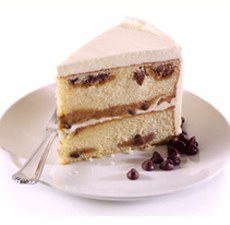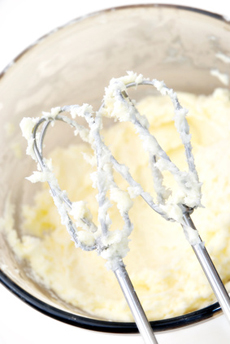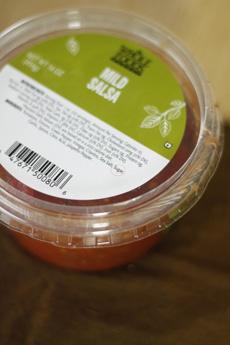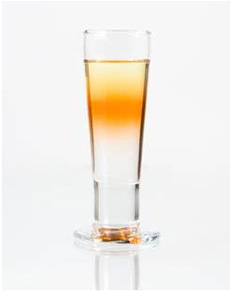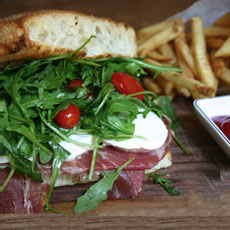|
Cake Preparation
1. Prepare cookie dough recipe at least 1 hour before mixing the cake, as it needs to chill in the refrigerator.
2. Preheat oven to 350°F.
3. Prepare the cake pans with baking spray and line with parchment paper rounds.
4. Sift flour, baking powder and salt into a mixing bowl.
5. Cream butter and sugar in a stand mixer on high until light and fluffy. Scrape bowl using a rubber spatula.
6. On medium speed, add eggs one at a time. Be sure to wait until each egg is completely incorporated before adding the next. Scrape bowl with a rubber spatula.
7. On low speed, add the flour mixture in three parts, alternating with the milk and vanilla, starting and ending with the flour mixture. Mix until smooth. Scrape bowl with a rubber spatula.
8. Pour ¼ of batter into each of the two prepared cake pans with a rubber spatula. Evenly distribute tablespoon portions of cookie dough across the batter surface. Space portions approximately 1″-2″ apart to ensure that each slice of cake is embedded with cookie dough. Pour remaining batter evenly between the two pans, making sure that the cookie dough is evenly covered. Spread batter with an offset spatula so that it is evenly in pan.
9. Bake at 350°F for 25-30 minutes, or until a wooden toothpick inserted in the center of the cake comes out clean and the cake springs back when pressed lightly in the center. The cake will slightly shrink away from the sides of the pans.
10. Let the cakes cool in the pans on a wire rack for 10-15 minutes. Run a small offset spatula around the outside of the cake to loosen from the pan, then carefully flip the cake out of the pan onto the wire rack. Place the cake right side up on rack and let it cool completely before icing.
Buttercream Ingredients
Makes roughly 4 pounds (enough to ice a 3-tier cake)
10 large egg whites, room temperature
2 cups granulated sugar
2 ½ pounds unsalted butter, room temperature
Buttercream Preparation
1. Make sure to have a completely clean and dry bowl when you start your process, any fat or liquid at all in the bowl will stunt the protein development of the albumen (egg white protein) and you will not have a proper meringue at the end.
2. Start whipping egg whites on medium low speed in the mixer by themselves (no sugar or butter yet) until the whites are foamy and opaque. It should look like the head of beer.
3. Increase to medium speed and slowly start adding the sugar until all the sugar is incorporated.
4. Once all the sugar is in, increase the speed of the mixer to high and whip until the mixture is shiny and stiff. You now have a meringue. You know when your meringue is done when you pull out the whip, hold it horizontal, and if you have what looks a “sparrow’s beak” on the end of the whip.
5. Replace the whip, turn the mixer on medium and start adding the butter a bit at a time. Once all the butter is incorporated, turn the mixer on medium speed and let it whip until the butter has completely emulsified into the meringue. When you first add the butter, your meringue will break down and look like cottage cheese, but will continue to emulsify into a smooth buttercream. Depending on the weather, the buttercream could take anywhere from 5 to 15 minutes to form. When the buttercream is ready, the mixture will be homogeneous and smooth.
6. Remove the buttercream from the bowl and place in an airtight container. Buttercream can be kept at room temperature for a few days or in the fridge for a week or two, but always use soft buttercream when icing a cake. To warm up the buttercream, put it back in the mixer using a rubber spatula. Begin remixing the buttercream using the whip attachment on high speed while applying direct heat to the outside of the bowl with a propane torch that can be found at any hardware store.
Note: Don’t worry about using raw egg whites in your buttercream. The sugar cooks the egg whites and makes them perfectly safe to eat. But if you are still uneasy about this, use pasteurized egg whites.
|
